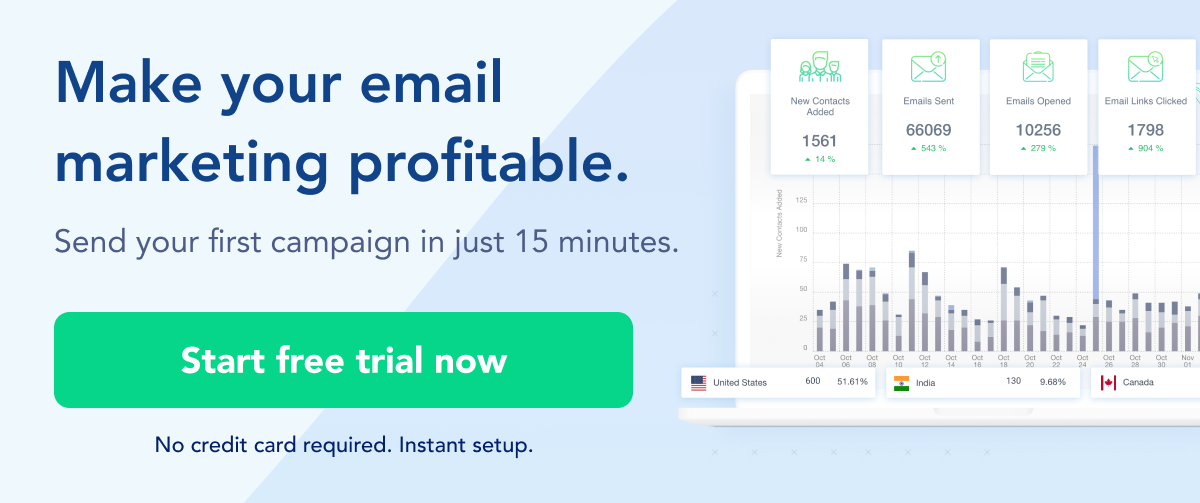
What Does P.S. Mean, and How Should You Use P.S. in Email Marketing?
Even after centuries since it was first used, the term “P.S.” is still found in many letters today.
Even after centuries since it was first used, the term “P.S.” is still found in many letters today. For many, it’s a delightful way to end a note instead of the usual “Yours Truly” or “Kind Regards.” It’s like an afterthought, a parting gift, or a valuable tip you give the other person. Sometimes, it’s also used to deliver the most interesting part of your message.
However, P.S. is not just used in letters. Today, it’s used in chats and comments and has been part of many clever email marketing strategies. But where did it originate? What does it mean? And how do we, as marketers, properly use it? In this post, we’ll discuss the meaning of P.S., explore its usage, and provide examples of how it’s currently used in email marketing.
Table of Contents
What does P.S. mean?
P.S. is short for the English word “postscript.” It originated from the Latin word postscriptum, meaning “written after.” According to history, people used the terms “postscript” and “P.S.” as early as the 1500s.
In the days of handwritten letters when ink and paper were the tools used for writing and computers didn’t exist, there was no way to “edit” your message. So, instead of rewriting, people wrote a P.S. after the note to write essential things they forgot to include in the body of the letter.
How to Properly Write PS/P.S.?
Does it have periods after each letter? Should both letters be capitalized? Here are some answers to these questions.
Based on the Cambridge Dictionary, PS is the format used in British English. In contrast, the P.S. with periods after each letter is the format for American English. However, they prefer PS without periods if you consult the Chicago Manual of Style. Ultimately, the usage of P.S. varies across writing style guides. Nowadays, however, the most common way to write P.S. is to capitalize the P and S and use periods after the letters.
All of them are grammatically correct, so you shouldn’t worry about misspelling P.S. Unless you’re writing a letter or email with a specific style guide, you can choose whichever spelling and punctuation of P.S. you prefer.
Why Do People Use P.S.?
Is it cool or does using it make you sound old-fashioned? While P.S. was originally used to include missed information in the body of a letter, today, it has many uses—with most of them leaning into its stylistic effects on the reader’s attention.
First, it’s used to emphasize an idea. It can highlight an important sentence that concludes what you want the person to know in the letter. This helps your reader understand your message clearly. Having one line separated from the rest is a great eye-catching detail so it’s not surprising that it’s often the first part read by most in an email.
Another reason people choose to use P.S. in email marketing is if they want to add extra thought. The thought usually doesn’t relate to the gist of the letter but is still an important point that you want your reader to know. Similar to a parting thought, it’s just a simple way to add an out-of-context idea.
In love letters, P.S. is used to express a sentiment. You might be familiar with PS I Love You, which is used in many romantic letters, the Beatles song, and also the title of Cecelia Ahern’s famous book-turned-movie. Lastly, it can be used to add a bit of fun to your letter. Most people who do this usually add a comical P.S. message to include a personal touch or to soften the whole message with humor.
How To Use P.S. in Your Marketing Emails
According to Siegfried Vogele, author of the famous marketing book Handbook of Direct Mail: The Dialogue Method of Direct Communication, as much as 90% of people read the P.S. before reading the mail itself. Contrary to what we think, it’s not the first paragraph that catches their eyes; it’s the last: the ones with the P.S. before the sentence.
So, consider using P.S. in email marketing if you want to improve your email open rates and conversions. The following are compelling examples of using P.S. to your advantage.
Share important links and information
Using P.S. to include essential information links or any other news that you think is worth your reader’s attention is a great way to add value to your emails. So, if you’re wondering how you can spice up your follow-up professional email and create a fun and informal vibe—try adding a P.S. and a memorable final note. It might just improve your open rates and conversions.
Source: Tech in Asia
The example above shows the daily newsletter of the tech website Tech in Asia, which includes a P.S. after the email body directing readers to a form. This form can help their companies get featured on their list of fundraising startups.
Create urgency and encourage action
Now that we’re in the age where most of us have short attention spans and are more “skimmers” than readers, P.S. is the best way to get to the point fast without wasting your reader’s time.
Since most users read the email’s P.S. First, it’s a great place to put your time-sensitive deals or encourage users to take immediate action. Doing so creates a sense of scarcity, making the product or service more valuable.
Source: Tim Denning
As you can see above, self-development writer Tim Denning uses the P.S. to encourage people to sign up for his writing challenge. He mentions that the course has limited slots and a limit to reach. This is an excellent way to use P.S. to encourage subscribers to take action and get this information in the mail.
Reiterate a Call to Action (CTA)
The most common way to use a P.S. is to restate your most important CTA. By emphasizing your main selling point the second time, you can increase the chances of it actually working for you. CTAs are amazing ways to boost click-through rates with your email. Without it, an email is just a scribble of pointless words.Source: CoSchedule
In this email, P.S. was used to reiterate CoSchedule’s free tools to its readers. It works for readers who might not be paying much attention at first read. This reiteration of the main selling point will motivate them to move forward to the next step which is trying out a tool like CoSchedule in this case. Whether that next step is to seek your contact or purchase your product. The best marketing tools for business use a combination of email, website, and SEO strategies. It’s important not to take one of these for granted.
Present a new feature
At the end of your email, you can include P.S. in email marketing to present a new or valuable feature for your readers or customers. It can be anything that will improve your reader’s life, something they can download, or a feature that inspires them to create new ideas.
Source: Writesonic
In this example, P.S. at the end of a letter presents the subscribers of Writesonic with a bulk upload feature. This allows them to generate as many as 1000 product descriptions in a single click.
Link to your blog
Another way you can use P.S. in your email marketing is by using it to link to your blog or website. Chances are, you already have a website that you wish to grow and increase in traffic. A P.S. After your newsletter, email can help you drive more traffic and growth to your website. As we know by now, P.S. is the part of the email that gets the most attention. So, if you link your blog or your website to it, there’s a huge chance that people will actually view it.Source: The Sill
In this example from The Sill, the company gives a short and sweet email to celebrate the upcoming new year. They motivate consumers to start the year right by purchasing new plants and planting more. At the end of the email, The Sill recommends the reader research more ideas on their blog.
Make the Most Out of Your Emails By Using P.S.
As you learn the value of P.S. and its effect on readers, it’s crucial that you also apply it to your own business emails. P.S. is a clever way to draw your reader to read your whole message. It’s also a great email marketing strategy to improve open rates and conversions.
If you dedicate time and effort to growing your email list, you should also take your email strategies to the next level. The above points should help you use P.S. correctly while making your emails more fun and enjoyable to read. Good luck!



